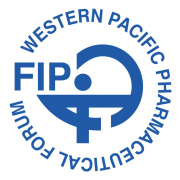Philippines: Fast-tracking health supplies to affected populations
November 2013
Reference :
http://www.who.int/features/2013/philippines-health-supplies/en/index.html
The Philippine Government has set up a “one-stop shop” at Mactan International Airport in Cebu to ensure the rapid delivery of incoming aid. WHO’s role within the one-stop shop is to facilitate coordination with international organizations bringing relief supplies for health into the country.
Mactan International Airport in Cebu in the central Philippines is the biggest of five supply hubs for humanitarian aid coming into the country in response to Typhoon Haiyan, with relief supplies from 28 countries arriving every day.
To ensure rapid delivery of incoming aid, the Philippine Government has set up a “one-stop shop” at the airbase where all paperwork and procedures required to clear supplies happen in one location.
Coordination of relief supplies for health

The Government has allocated space for WHO within the one-stop shop to facilitate coordination with international organizations bringing relief supplies for health into the country. From there, WHO works with more than 20 organizations to coordinate supply tracking, clearances, loading and dispatching of medicines and medical equipment to typhoon-affected areas.
“After the typhoon, when there was a massive surge of humanitarian aid, many international organizations were unfamiliar with the procedures for bringing in relief supplies and getting them to affected areas. The Government recognized the added value of WHO’s role in coordinating with the range of organizations bringing in health supplies, and brought us into the one-stop shop from the very beginning,” says Rémy Prohom, WHO logistician at Mactan Airport.
Online supply tracking system
In an emergency of this scale, one of the biggest challenges has been keeping track of the massive amounts of supplies coming in, and identifying where they need to go. As aid continues to come in from donors and partners, WHO is establishing an online supply tracking system to track health items from the moment they are sent until they are distributed to the affected population.
“When we are get shipments cleared through customs and find the best ways to get them transported to affected areas, we know that we’re doing our part to help save peoples’ lives.”
Rémy Prohom, WHO logistician at Mactan Airport
Once supplies have been cleared through required procedures they are reloaded onto planes, boats and trucks headed for hard-hit areas like Tacloban, Roxas and Ormoc. This needs to be carefully coordinated as airbases in some affected areas are still functioning at low capacity due to power shortages and limited storage space.
More than 24 flights leave Mactan airbase every day carrying relief supplies to affected areas. “The support we have seen from the international community is overwhelming,” said Butch Guevera, senior spokesperson for the Philippine Air Force.
WHO humanitarian supply hubs
In addition to facilitating the transportation and delivery of arriving supplies, WHO has flown medicines and medical equipment into Cebu from its own humanitarian supply hubs in Accra, Ghana, Brindisi, Italy, and Dubai, United Arab Emirates.
“We have a storage warehouse at Cebu pier for WHO supplies such as medicines, emergency kits and tents. We dispatch these to WHO staff working on relief efforts in other parts of the country as and when they’re needed, and we also make them available to partners with staff on the ground,” says Rémy.
“Working with the Government, our role is to make sure that assistance can be delivered to people in need without delays or constraints. When we are get shipments cleared through customs and find the best ways to get them transported to affected areas, we know that we’re doing our part to help save peoples’ lives.”
